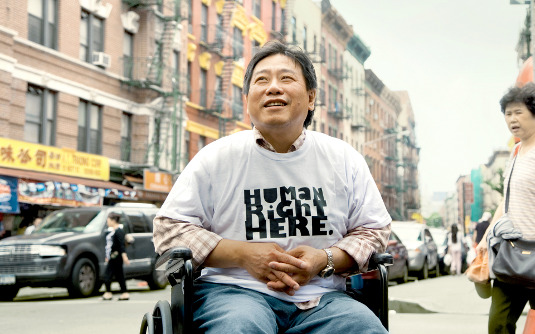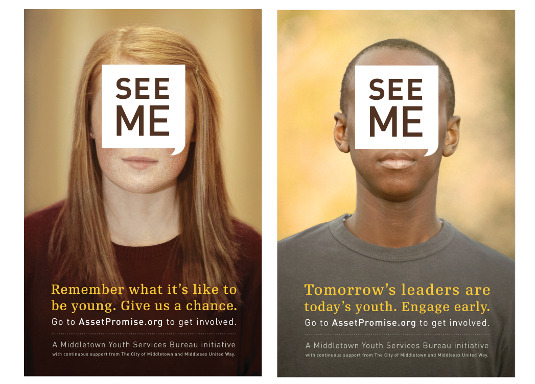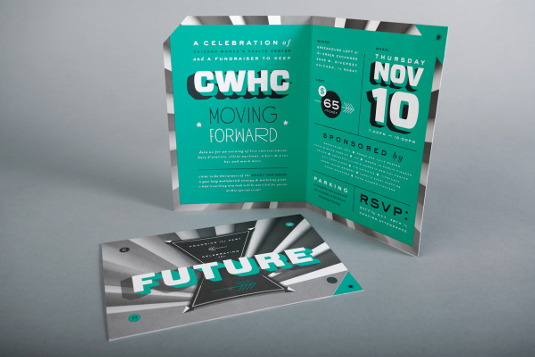The designer's guide to working for nonprofits
Want to help make the world a better place? Industry experts offer these top tips for working with nonprofits.
When it comes to charitable work, we'd all like to do our bit. But did you know working in socially responsible and nonprofit design can be as much about good business sense as it is good causes? That's the message from a group of leading creatives from around the world in the latest issue of Computer Arts.
With that in mind, we asked three experts how to get started in socially responsible desing, what kind of groundwork you need to put in and how to safeguard against potential problems.
Where to start
Rich Hollant, lead strategist and design director at Co:Lab, offers four ways to get involved in socially responsible design:
- Accept that sustainability and charity make lousy bedfellows. If you believe in your mission, treat it like a business.
- Get informed. We immersed ourselves the social sector through research and personal experience. We learned how foundations and government agencies assess and support organisations; we joined nonprofit boards and were exposed to organisational structures and operational issues; and we continually strive to absorb more about advocacy, development, accountability and capacity building.

- Connect with the nonprofit support community. We are committed to knowing likeminded people who provide grant writing, data collection and analysis, development and organisational support and consulting for social value organisations. Individually, we can't be experts at everything, but collectively we can.
- Open-source the knowledge, not the work. We present and run workshops for social value organizations on strategy and branding, along with focused "execution" seminars on topics such as web development and messaging. Since these are presentations to groups, the cost per organization for our time is nominal - sometimes free."

Pro bono vs paid work
You needn't always work for free. Although pro bono work is commendable, working with nonprofits as part of a sound business arrangement is just as effective as working unpaid.
"The biggest challenge and perhaps the risk involved in doing nonprofit work," Rich Hollant says, "comes down to how you manifest patience. This is doubly true when the mission you are working toward is important to you - triply true when there is real measurable suffering or potential loss associated with that mission. It's challenging to keep a sense of urgency from undermining your faith in the design-thinking process."
Finding a decision maker
"Seek out the big cheese. Find the person who will make the big decisions and champion the design work," says Gareth Howat.
The founding partner of Hat-Trick Design stresses the importance of speaking directly to an organisation's decision maker, getting them onside as early as possible so you have someone who trusts what and you do and is willing to stand up for your creative decisions. "The work won't stick without it," Howat concludes.
Get the Creative Bloq Newsletter
Daily design news, reviews, how-tos and more, as picked by the editors.
Ground rules
If you're teaming up with a nonprofit that's never worked with a professional designer before, it's crucial you explain each step of the creative process throughout and include them in every stage of the project's development. That's the message from Dawn Hancock.
"Take the veil off," the Firebelly partner and creative director says. "If they don't understand how much goes into creating great work, they will never understand the value of the finished piece, and, in turn, never allocate the proper funding needed to produce it. They will just think we are magicians."
Budgeting
Most nonprofits, particularly the smaller ones, have limited funding. If you're carrying out paid work, set a budget up front, ensuring you specify how many hours that includes. "Of course, that doesn't mean you can't do more within that budget," Dawn Hancock says, "but at least it'll be your decision. Share your hours as you go. This will help them understand how much time things take and will also give you the ability to say, "Hey we're at 80 per cent of the total budget and there's this more work to do, how would you like to proceed?"
If you can't carry out the necessary work to budget available - and to a standard you'll be happy with - don't be afraid to say no. In the long run, it's best for both parties.
Free doesn't mean unprofessional
"If you decide to work for free with an organization, follow the same rules you would a paid gig," Dawn Hancock says. "Let the organization know how much time you are willing to donate so you can avoid feeling like you are being taken advantage of."

Prepare a proposal just as you would for a paying client, so expectations are laid out up front. Hancock even advises sending an invoice at the end of the job - "marked no charge, of course." Clients, even nonprofits, should be made aware of the hours and cost involved in your work.
Building enduring relationships
Like any designer-client relationship, it's pays to stay close to whoever your contract within organisation is. Even if you don't have an ongoing project, it's worth checking in every now and again - an email, phone call or taking them out to lunch.
"There's often a quick turnover of staff within nonprofits," Gareth Howat says, "so there seems to be a new drive or initiative every few months. Rather than throw the work away and start again, assuming the design is intelligent and strong, they should be building on their investment by developing."
Remember, you're the design expert
Everyone has an opinion on design. And even if you're working for free or at a reduced rate, your client may try and dilute your vision. It's important you stress that this is your area of expertise.
"You'll get a lot of contrasting opinions and people pulling you in different directions," Gareth Howat says concludes. "You have got to believe and stick to your guns or the work will get diluted and not stand out. Never, never, never, never, give in: if your work is well thought through and robust, stand up for it."
Words: Gary Evans
Liked this? Read these!
- Create a perfect mood board with these pro tips
- The ultimate guide to logo design
- Our favourite web fonts - and they don't cost a penny
Have you done any work for nonprofits? Tell us in the comments!

Thank you for reading 5 articles this month* Join now for unlimited access
Enjoy your first month for just £1 / $1 / €1
*Read 5 free articles per month without a subscription

Join now for unlimited access
Try first month for just £1 / $1 / €1

The Creative Bloq team is made up of a group of art and design enthusiasts, and has changed and evolved since Creative Bloq began back in 2012. The current website team consists of eight full-time members of staff: Editor Georgia Coggan, Deputy Editor Rosie Hilder, Ecommerce Editor Beren Neale, Senior News Editor Daniel Piper, Editor, Digital Art and 3D Ian Dean, Tech Reviews Editor Erlingur Einarsson, Ecommerce Writer Beth Nicholls and Staff Writer Natalie Fear, as well as a roster of freelancers from around the world. The ImagineFX magazine team also pitch in, ensuring that content from leading digital art publication ImagineFX is represented on Creative Bloq.
